Adromischus cristatus var. mzimvubuensis
Adromischus cristatus (Haw.) Lem. var. mzimvubuensis Van Jaarsv.
Family: Crassulaceae
Common names: Mzimvubu adromischus (Eng.), Mzimvubu kransplakkie (Afr.)
Introduction
Adromischus cristatus var. mzimvubuensis is a rare cliff-hugging succulent only known from the Mzimvubu River in the Eastern Cape. The plants are dwarf rosette-forming leaf and stem succulents. The leaves are pale to olive green with an often wavy margin that is continuous to its base. The flowers are whitish with a reddish margin, in summer. Best grown in containers.
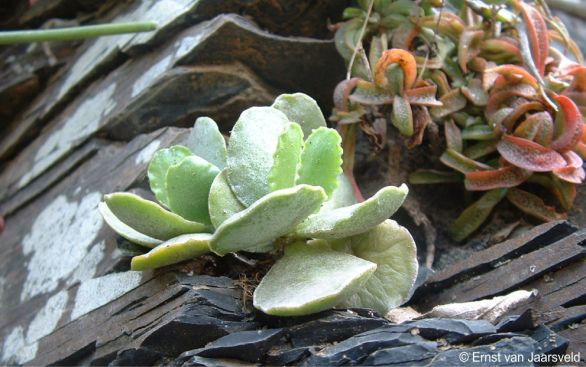
Fig. 1. Adromischus cristatus var. mzimvubuensis growing on a shale ledge along the Mzimvubu River, with Crassula foveata.
Description
Description
The plants are sparsely branched, almost acaulescent, up to 60 mm high (without inflorescence), 60–110 mm in diameter. The roots are fibrous. The branches grow ascending to reclining (decumbent), and are usually very short, up to 10 mm long, green, usually not visible owing to reddish-brown aerial roots. The leaves are crowded, in lax to dense rosettes up to 110 mm in diameter, lorate-obovate to broadly obovate, 40–80 x 20–30 mm, biconvex when turgid, dorsiventrally compressed, ascending, upper third of leaf end incurved and flat to slightly concave, the leaf ends blunt (truncate) to rounded and the base wedge-shaped. The leaf surface is without spots, slightly hairy, becoming hairless (glabrescent), pale green to olive-green, the margin horny, straight to undulating, continuous on to stem. The inflorescence consists of a simple or branched, brownish green, spike-like thyrse up to 230 mm high, bearing 2- or 3-flowered cymes, the surface covered with club-shaped dwarf hairs (trichomes). The floral bracts are triangular, adpressed, 3 x 1 mm; buds ascending, spreading, slightly tapering. The leaf pedicels 1.0–1.5 mm long. The calyx tubular, 3.5 mm long with the lobes triangular, 1.5–2.0 x 1 mm. The flower (corolla) is tubular, 12 x 4 mm; tube cylindrical, grooved, pale green, dotted with maroon; lobes broadly triangular-ovate, 5 x 3 mm, white-pink, maroon-red at throat, cuspidate, at first spreading, becoming recurved against tube with bases of lobes fused for 1.5 mm; apex purplish mottled; throat rough owing to club-shaped trichomes. The stamens 10 mm long, shortly included, fused to lobes in basal half; anthers yellowish, 7 x 4 mm. The nectary glands (squamae) are translucent and rectangular, 8 x 8 mm, the ends slightly notched (emarginate). The fruiting carpels are 8 mm long tapering into long, erect styles. Flowering occurs mainly in summer (January and February).
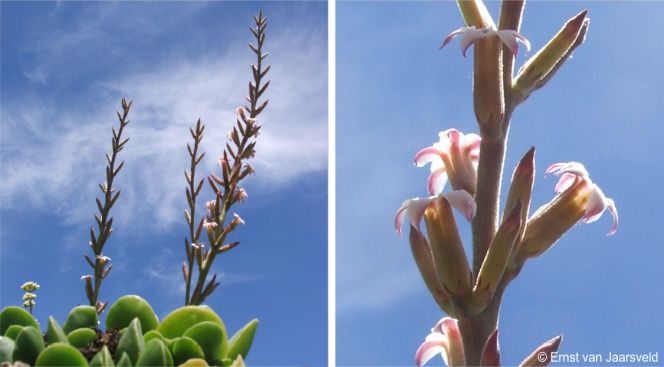
Fig. 2. Adromischus cristatus var. mzimvubuensis flowering in the Succulent Section at Kirstenbosch National Botanical Garden.
Conservation Status
Status
Adromischus cristatus var. mzimvubuensis is assessed as Rare by the Red List of South African Plants. The plants are safeguarded by their difficult to reach habitat, and its distribution falls within a greater conservation region, thus it is not threatened.
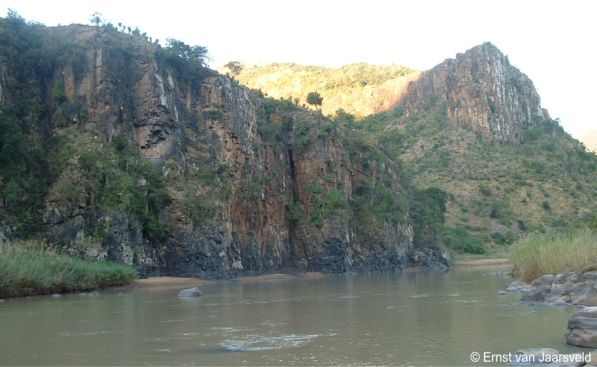
Fig. 3. Shale cliffs along the Mzimvubu River, Eastern Cape, habitat of Adromischus cristatus var. mzimvubuensis.
Distribution and habitat
Distribution description
Adromischus cristatus var. mzimvubuensis is only known from the Mzimvubu River in the Eastern Cape. The plants vary considerably in size and leaf shape, some forms with almost obovate leaves (more exposed north- and west-facing) and undulating margins, whereas others have mostly oblong leaves without the undulations. They are locally quite common. Adromischus cristatus var. mzimvubuensis grows on Ecca Shale cliffs (Karoo Supergroup), on all aspects at altitudes from 460-800 m. Temperatures vary and may reach 40°C in summer. Winters are cooler but frost is a rarity or absent. The average daily maximum temperature is about 22°C and the average daily minimum about 12°C. Rainfall occurs mainly in summer and ranges from 400–700 mm per annum.
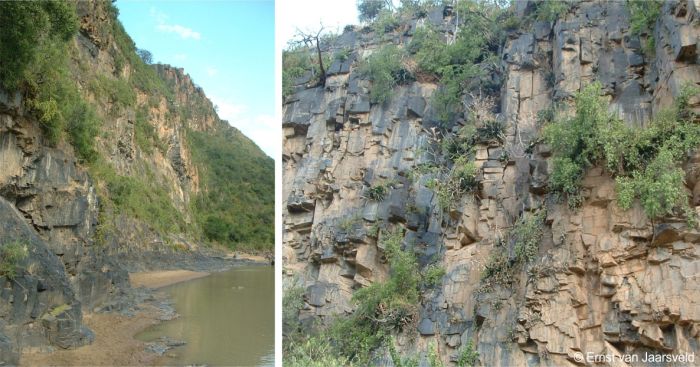
Fig. 4. Shale cliffs along the Mzimvubu River, Eastern Cape, habitat of Adromischus cristatus var. mzimvubuensis.
The associated vegetation consists of Eastern Valley Bushveld of the Savanna Biome. Associated cliff dwelling plants include Cotyledon flanaganii subsp. mzimvubuensis, Crassula cultrata, C. foveata, C. intermedia, C. floribunda (= C. multicava subsp. floribunda) and C. perforata, Cyanotis speciosa, Gasteria loedolffiae, Albuca bracteata (= Ornithogalum longibracteatum) and Caputia medley-woodii.
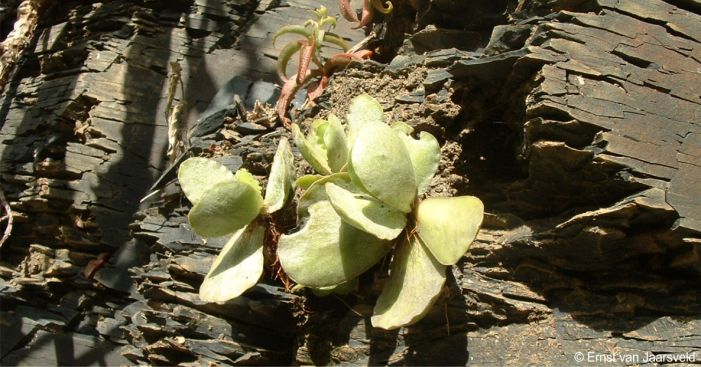
Fig. 5. Adromischus cristatus var. mzimvubuensis growing on a shale ledge along the Mzimvubu River, with Crassula foveata . Note the margin of the leaves that goes right down to the base of the leaf.
Derivation of name and historical aspects
History
Adromischus cristatus var. mzimvubuensis was named by Braam van Wyk and the author in Aloe magazine in 2004 from plants collected by the author on a rubber canoe expedition down the Mzimvubu River in 2002, with colleagues Adam Harrower and uPakhamani Xaba, and Godfrey Zwide of Eastern Cape Nature Conservation. The species is named for its habitat, the Mzimvubu River. The name means ‘home of the Hippopotamus’ in Xhosa. The Mzimvubu River drains large parts of the south-eastern Drakensberg and reaches the sea at Port St Johns. Adromischus cristatus var. mzimbubuensis, unlike the var. zeyheri, does have some reddish-brown aerial roots on its stems but not as densely as in the other varieties. The var. mzimvubuensis differs also by its almost acaulescent leaves, the leaf margin which runs down to the stem and the leaf surface which is almost glabrous.
Adromischus cristatus var. mzimvubuensis belongs to Section Longipedunculati to which 5 species belong: A. cooperi, A. cristatus, A. leucophyllus, A. marianae and A. subviridis.
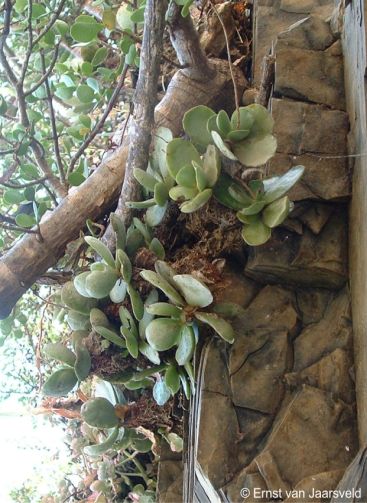
Fig. 6. A cluster of Adromischus cristatus var. mzimvubuensis growing on a shale cliff in the shade of a large Portulacaria afra plant, along the Mzimvubu River in theEastern Cape.
Ecology
Ecology
The plants form loose, much-branched clusters with leaves crowded at the apices. Plants are conspicuous, often sprawling from the cliff face, and are well adapted to the well-drained, vertical habitat. The leaves store water and become turgid during the rainy season and this ensures its survival during the dry season. The leaves are long-lived and relatively large, maximising absorption of light on the shady cliffs. Leaves are firm, becoming easily detached by slight disturbances. The leaves are without conspicuous armament, or camouflage properties, because they have become adapted to the undisturbed cliff face which is free of large herbivores, and it benefits from its passive resistance.
Flowering occurs in summer (November–February). The fruiting capsule is dehiscent, the seeds are spontaneously released and dispersed by wind in summer and early autumn, coinciding with autumn rains and thus maximising establishment. The seeds are minute and ideal for establishment in crevices. Like other Adromischus species, this plant proliferates from leaves that have become detached, a vegetative reproductive backup system ensuring long-term survival.
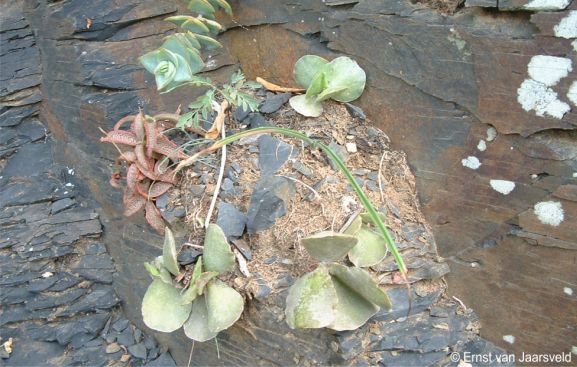
Fig. 7. Adromischus cristatus var. mzimvubuensis plants growing on a shale cliff ledge, that have arisen from fallen leaves that rooted and formed new plants. Here they share their habitat with Crassula foveata and Crassula perforata.
Uses
Use
No medicinal or cultural uses have been recorded.
Growing Adromischus cristatus var. mzimvubuensis
Grow
Adromischus cristatus var. mzimvubuensis is easily grown and should become popular as a pot plant in cultivation. It grows best in dappled shade in a gravely or sandy, sandy-loam to loamy soil, which drains well. Plants respond rapidly to watering, becoming turgid and dividing to form dense clusters quickly filling the containers. Plants can be fed with an organic fertiliser throughout the year. Its very easy growing nature maximises its survival rate. Plants adapt well to containers.
In regions outside of its habitat, ceramic containers are the optimum solution. It also grows well with other succulents in miniature succulent gardens where conditions can be controlled.
Plants are easily propagated by division or leaf cuttings in late summer, and are not too difficult in cultivation. Avoid over watering as plants tend to rot. Water should be provided throughout the year, but sparingly.
Sow seeds in autumn, winter or spring in a shallow tray in a sandy mixture and keep moist. Germination is within 3 weeks and once large enough to handle, transfer to individual containers. Place container in a shady position but with full light. The south side of a building is ideal.
Plants are relatively disease free, but aphids, wine weevils, slugs and snails can sometimes be a problem. Watch out for root rot caused by too much watering.
References
- Johnson, M.R., et al. 2006. Sedimentary rocks of the Karoo Supergroup. In M.R. Johnson, C.R. Anhaeusser & R.J. Thomas (eds), The geology of South Africa: 463–501. Geological Society of South Africa, Johannesburg Council for Geoscience, Pretoria.
- Mucina, L. & Rutherford, M.C. (eds) 2006. The vegetation of South Africa, Lesotho and Swaziland. Strelitzia 19. South African National Biodiversity Institute, Pretoria.
- Raimondo, D., Von Staden, L., Foden, W., Victor, J.E., Helme, N.A., Turner, R.C., Kamundi, D.A. & Manyama, P.A. (eds) 2009. Red list of South African plants. Strelitzia 25. South African National Biodiversity Institute, Pretoria.
- Pilbeam, J., Rodgerson, C. & Tribble, D. 1998. Adromischus. The Cactus File Handbook 3. Cirio Publishing Services, Southampton.
- Toelken, H. R. 1985. Adromischus in Crassulaceae, Flora of southern Africa (ed. O.A. Leistner. Botanical Research Institute, Department of Agriculture and Water Supply.
- Van Jaarsveld, E.J. & Van Wyk, A.E. 2003. New cliff-dwelling Crassulaceae from the Eastern Cape: a new Cotyledon and two new Adromischus taxa from the Mbashe and Mzimvubu Rivers, South Africa. Aloe 40(2): 36–40.
- Van Jaarsveld, E.J. 2003. The Mzimvubu River botanical expedition. Veld & Flora 89 (3): 101–105.
- Von Poellnitz, K. 1940. Zur Kenntnis der Gattungen Cotyledon L. und Adromischus Lem. Feddes repertorium specierum novarum regni vegetabilis, Zeitschrift für systematische Botanik 48: 80–113.
Credits
Ernst van Jaarsveld
Kirstenbosch National Botanical Garden (Retired)
Babylonstoren Farm (Current)
Extraordinary senior lecturer and researcher,
Department of Biodiversity and Conservation, University of the Western Cape
June 2025
Acknowledgements: the author thanks his colleagues Adam Harrower and uPakhamani Xaba for their assistance on his rubber canoe expedition down the Mzimvubu River, and Freddie van Wyk for dropping us at the Welsh Bridge and fetching us at Port St Johns.
Plant Attributes:
Plant Type: Succulent
SA Distribution: Eastern Cape
Soil type: Sandy, Loam
Flowering season: Early Summer, Late Summer
PH: Acid
Flower colour: White, Pink
Aspect: Morning Sun (Semi Shade)
Gardening skill: Easy
Special Features:
Horticultural zones







Rate this article
Article well written and informative
Rate this plant
Is this an interesting plant?
Login to add your Comment
Back to topNot registered yet? Click here to register.